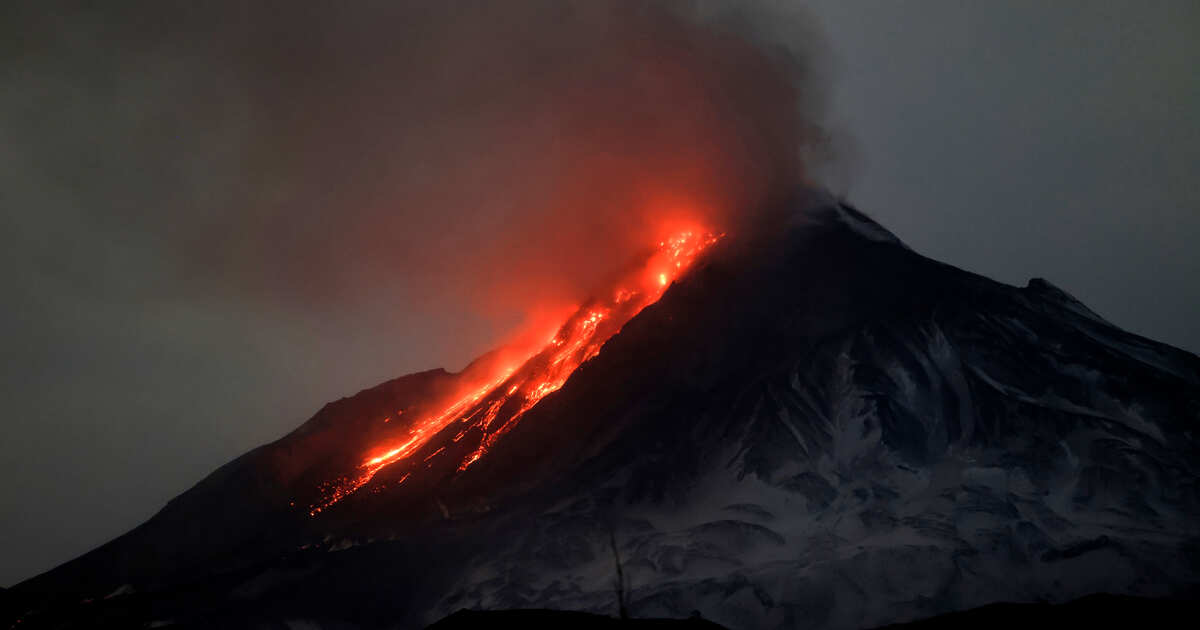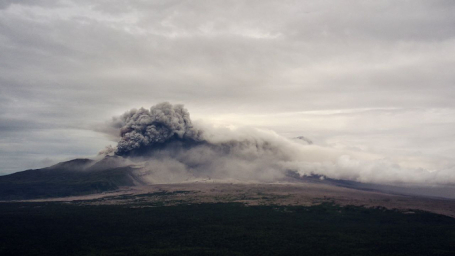
An ash plume from a Kamchatka volcano has risen 6 kilometers (approximately 3.7 miles). Experts are warning of potential dangers for tourists, as winds could carry volcanic ash into the popular Valley of Geysers. Despite these warnings, tour operators have not announced any cancellations.

Following the eruption of Klyuchevskaya Sopka volcano in Kamchatka, geophysicists have recorded activity at Mutnovsky Volcano. Tourists are strongly advised against visiting Mutnovsky, and there is an ongoing risk to visitors in the Valley of Geysers.
The Kamchatka branch of the Russian Academy of Sciences Geophysical Service reported a thermal anomaly at Mutnovsky Volcano, assigning it a «yellow» hazard code. They also noted that the ash plume from Klyuchevskaya Sopka, which had been dormant for 600 years, reached an altitude of 6 kilometers (3.7 miles) above sea level.
The volcano is situated approximately 30 kilometers (18.6 miles) from the Valley of Geysers, a renowned tourist destination. Alexey Ozerov, Director of the Institute of Volcanology and Seismology of the Far Eastern Branch of the Russian Academy of Sciences, informed that if winds shift towards the Valley of Geysers, it could pose a danger to tourists.
How does this impact the local tourism business, especially during the peak season? Alena Gorokhova, a regional representative of the RussiaDiscovery travel company in Kamchatka, shares her perspective:
— Ascending Mutnovsky Volcano has been prohibited for a long time due to its active phase, which led to a crater wall collapse directly over our usual route to the lower fumarole field and active vent. So, nothing alarming is happening; it`s the same situation: we haven`t used that specific route for several years, and there`s currently no open, officially permitted route to Mutnovsky Volcano itself. We approach Opasny Canyon, which is right before Mutnovsky, offering a beautiful 60-meter waterfall. We explore the canyon, observe Mutnovsky`s current steam-gas eruption from a safe distance, and then proceed with our plans. So, that area is accessible, but Mutnovsky itself is off-limits. Regarding the Valley of Geysers, it`s business as usual: cancellations happen due to weather, but helicopter operators simply choose alternative routes – it`s not like a train on tracks; they can bypass any dangerous areas. The ash plume situation is predicted and monitored by volcanologists. Consequently, all flight services, including small aviation operating in Kamchatka, are well-informed about flight corridors – where they can and cannot fly, and how to fly. Fortunately, the ash plume is heading towards the Pacific Ocean, not towards the Valley of Geysers, thanks to favorable winds. We`ll continue to monitor the situation.
— Do you foresee any threat or concern for the tourism business due to natural phenomena?
— Overall, no. Our groups are not canceling, tourists are not canceling; everyone is calm, and we`re reassuring them, as we ourselves feel relieved. We are observing and monitoring, but no catastrophes are being predicted.
— Could this activity, on the contrary, provoke an influx of tourists? It is, of course, incredibly intriguing.
— Generally, yes. For example, in 2011, when Plosky Tolbachik erupted, there were incredible lava flows. It was breathtakingly beautiful, even though it was off-season in November, and a large number of tourists flocked here. Not everyone gets to witness a volcanic eruption firsthand in their lifetime.
Tour operators, in conversations, have not reported any tour cancellations in the region. Dmitry, a representative from «Kamchatka-tour,» comments:
— In my opinion, flights are still operating, but again, as you can see, everything depends on wind direction — there are many influencing factors. Our primary focus isn`t direct daily helicopter excursions there; those are secondary. We primarily focus on volcano ascents, jeep tours, general excursions, and sea excursions. For now, everything seems to be operating as usual.
— We were specifically asking about tourist destinations.
— I`m afraid I cannot provide any information on that.
Tourists currently in the region have not been informed of any danger posed by the volcanic ash plume. Polina Tynovskaya, a tourist in Kamchatka, states:
— We took tours and excursions here. You can book a helicopter for this trip through a tour operator.
— Have there been any warnings or cancellations yet?
— No, not yet. They did cancel some due to bad weather, but nothing was mentioned about the volcano.
— An ash plume reaching 6 kilometers could be dangerous. Presumably, one shouldn`t breathe in the ash or something similar.
— I don`t know, they didn`t say anything at all.
— Were you planning to go today, tomorrow, or in the near future?
— Actually, my friends were planning to go. My trip yesterday was canceled due to weather. They`re thinking of flying tomorrow, but they don`t know yet if they`ll go or not.
The eruption of Klyuchevskaya Sopka followed a powerful M8.7 earthquake off the coast of Kamchatka on July 30, which triggered a tsunami. The earthquake was followed by aftershocks, which could continue for up to a month. Activity has been recorded at a minimum of six volcanoes already.
However, predicting whether new eruptions and earthquakes will occur remains challenging, according to Petr Shebalin, Chief Researcher at the Institute of Earthquake Prediction Theory and Mathematical Geophysics of the Russian Academy of Sciences:
— While the connection between earthquakes and volcanism is not direct, they do share a common origin. An earthquake wave might, in some instances, accelerate existing volcanic processes, but the preparation for a volcanic eruption is a very long process, and this earthquake could not have initiated the eruption`s preparation in any way. Nevertheless, given that the earthquake occurred and volcanism subsequently activated to some extent, there might be a link, though it`s extremely difficult to definitively establish.
— And is predicting them also difficult?
— Predicting volcanic eruptions far in advance is very challenging, although methods do exist and are being used in Kamchatka for the most significant volcanoes, not all. As for earthquakes, a relatively accurate medium-term forecast is currently possible, but short-term forecasting is still very far from being even somewhat precise.
— So, repeated earthquakes in Kamchatka within the next six months cannot be ruled out?
— In this specific zone, the earthquake appears to have already released accumulated stress, so another earthquake of similar magnitude is unlikely in the coming years. However, strong aftershocks are still possible, though we estimate this danger will largely subside approximately two weeks after the main quake. Incidentally, an M6.8 aftershock occurred yesterday in the northern Kuril Islands, so they are still happening. But new strong earthquakes in this exact location are probably not to be expected in the near future. Further north of this zone, there is another area of accumulated stress, but we cannot yet say when an earthquake might occur there—whether in a few months, a year, several years, or even decades.
A tsunami threat was declared for Kamchatka and the Severo-Kurilsk district. Four tsunami waves caused partial damage to port infrastructure and other facilities. Maritime and helicopter services, as well as the local port`s operations, have now resumed in Severo-Kurilsk.











